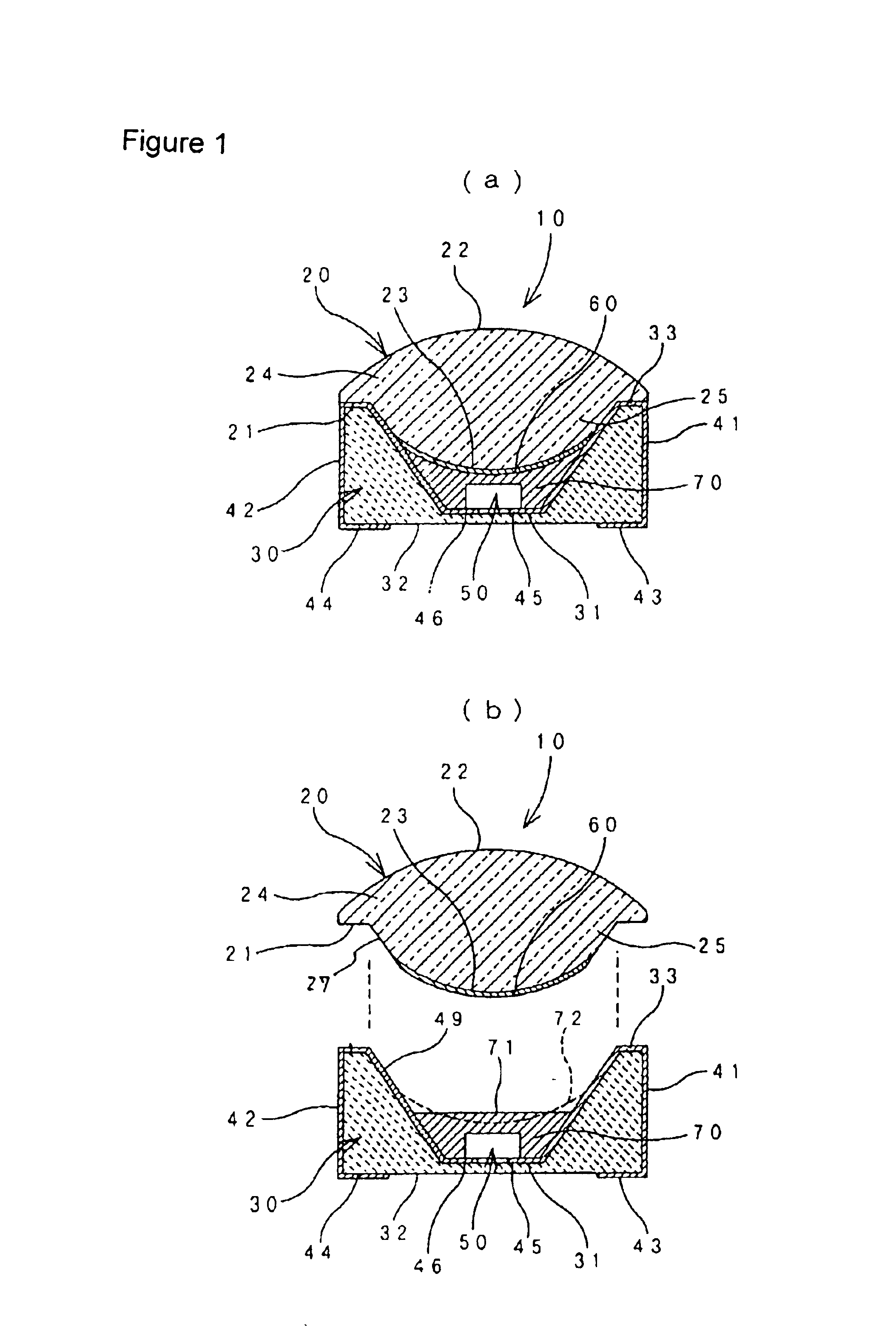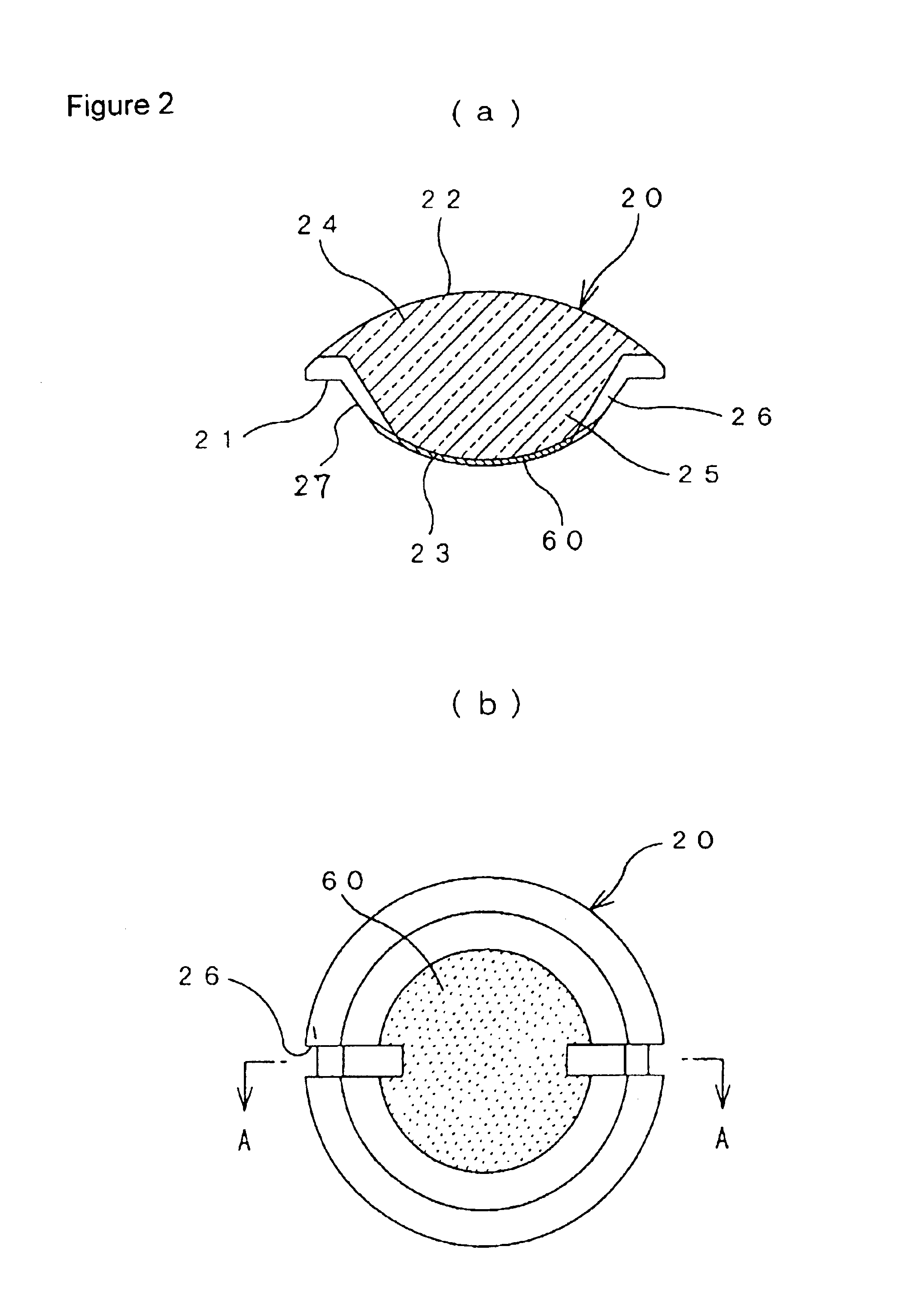Light emitting diode
a technology of light-emitting diodes and diodes, which is applied in the direction of discharge tubes luminescnet screens, electric discharge lamps, lighting and heating apparatus, etc., can solve the problems of reducing the luminous efficacy, affecting the luminous efficacy of the assembled light-emitting diodes, and unable to eliminate the air layer, so as to achieve the effect of improving the luminous efficacy and ensuring the stable emission performance of the assembled light-
- Summary
- Abstract
- Description
- Claims
- Application Information
AI Technical Summary
Benefits of technology
Problems solved by technology
Method used
Image
Examples
Embodiment Construction
Light-emitting diodes and methods for their production that are preferred embodiments of the present invention will now be described in detail while referring to the attached drawings. FIG. 1 is a cross-section describing the light-emitting diode that is the first preferred embodiment of the present invention, with (a) showing the state when assembly is completed and (b) showing this state before assembly. FIG. 2 is a Fig. showing the structure of the lens member used in the light-emitting diode that is the first preferred embodiment. (a) is a bottom view and (b) is a cross-section along line A—A in (a).
Light-emitting diode 10, which is the first preferred embodiment, has light-emitting diode chip 50, base 30 that holds this chip, and lens member 20 set up on base 30. base 30 comprises cup part 31 with a concave structure, and light-emitting diode chip 50 is held and mounted inside this cup. Base 30 is worked into a pre-determined shape by grinding a ceramic material or molding a pl...
PUM
 Login to View More
Login to View More Abstract
Description
Claims
Application Information
 Login to View More
Login to View More - R&D
- Intellectual Property
- Life Sciences
- Materials
- Tech Scout
- Unparalleled Data Quality
- Higher Quality Content
- 60% Fewer Hallucinations
Browse by: Latest US Patents, China's latest patents, Technical Efficacy Thesaurus, Application Domain, Technology Topic, Popular Technical Reports.
© 2025 PatSnap. All rights reserved.Legal|Privacy policy|Modern Slavery Act Transparency Statement|Sitemap|About US| Contact US: help@patsnap.com



